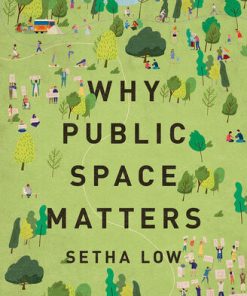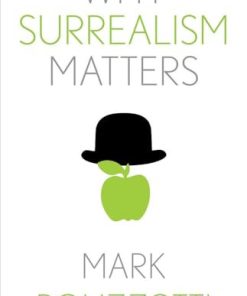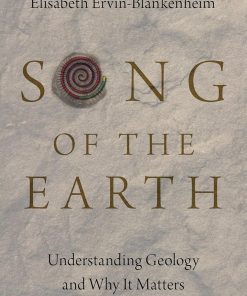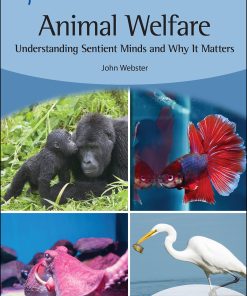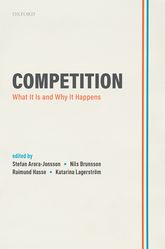(Ebook PDF) Aesthetic Life and Why It Matters 1st edition by Dominic Lopes 9798214341903 full chapters
$50.00 Original price was: $50.00.$25.00Current price is: $25.00.
Aesthetic Life and Why It Matters 1st edition by Dominic Lopes – Ebook PDF Instant Download/DeliveryISBN: 9798214341903
Full download Aesthetic Life and Why It Matters 1st edition after payment
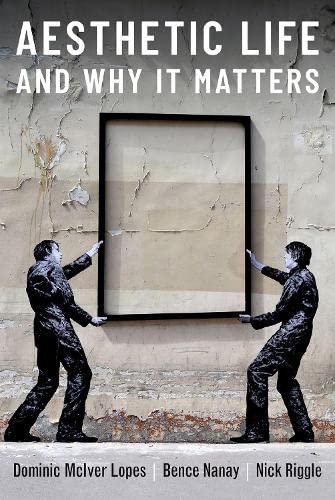
Product details:
ISBN-13 : 9798214341903
Author: Dominic Lopes
Featuring a beautiful new design, THE EARTH AND ITS PEOPLES, 7th Edition, presents world history in a balanced, global framework, shifting the focus away from political centers of power and toward the living conditions and activities of ordinary people. This truly global world history book employs a fundamental theme — the interaction of human beings and the environment — to compare different times, places, and societies. Special emphasis is given to technology (in its broadest sense) and how technological development underlies all human activity.
Aesthetic Life and Why It Matters 1st Table of contents:
Part I. The Emergence of Human Communities, to 500 BCE
Chapter 1. Nature, Humanity, and History, to 3500 BCE
1-1. African Genesis
1-1a. Interpreting the Evidence
1-1b. Human Evolution
1-1c. Migrations from Africa
1-2. Technology and Culture in the Ice Age
1-2a. Food Gathering and Stone Tools
1-2b. Gender Roles and Social Life
1-2c. Hearths and Cultural Expressions
1-3. The Agricultural Revolutions
1-3a. The Transition to Plant Cultivation
1-3b. Domesticated Animals and Pastoralism
1-3c. Agriculture and Ecological Crisis
1-4. Life in Neolithic Communities
1-4a. The Triumph of Food Producers
1-4b. Cultural Expressions
1-4c. Early Towns and Specialists
1-5. Conclusion
Key Terms
Review Questions
Chapter 2. The First River-Valley Civilizations, 3500–1500 BCE
2-1. Mesopotamia
2-1a. Settled Agriculture in an Unstable Landscape
2-1b. Sumerians and Semites
2-1c. Cities, Kings, and Trade
2-1d. Mesopotamian Society
2-1e. Gods, Priests, and Temples
2-1f. Technology and Science
2-2. Egypt
2-2a. The Land of Egypt: “Gift of the Nile”
2-2b. Divine Kingship
2-2c. Administration and Communication
2-2d. The People of Egypt
2-2e. Belief and Knowledge
2-3. The Indus Valley Civilization
2-3a. Natural Environment
2-3b. Material Culture
2-3c. Transformation of the Indus Valley Civilization
2-4. Conclusion
Key Terms
Review Questions
Chapter 3. The Mediterranean and Middle East, 2000–500 BCE
3-1. The Cosmopolitan Middle East, 1700–1100 BCE
3-1a. Western Asia
3-1b. New Kingdom Egypt
3-1c. Commerce and Communication
3-2. The Aegean World, 2000–1100 BCE
3-2a. Minoan Crete
3-2b. Mycenaean Greece
3-2c. The Fall of Late Bronze Age Civilizations
3-3. The Assyrian Empire, 911–612 BCE
3-3a. God and King
3-3b. Conquest and Control
3-3c. Assyrian Society and Culture
3-4. Israel, 2000–500 BCE
3-4a. Origins, Exodus, and Settlement
3-4b. Rise of the Monarchy
3-4c. Fragmentation and Dispersal
3-5. Phoenicia and the Mediterranean,1200–500 BCE
3-5a. The Phoenician City-States
3-5b. Expansion into the Mediterranean
3-5c. Carthage’s Commercial Empire
3-5d. War and Religion
3-6. Failure and Transformation, 750–550 BCE
3-7. Conclusion
Key Terms
Review Questions
Chapter 4. New Civilizations Outside the West Asian Core Area, 2300 BCE–350 CE
4-1. Early China, 2000–221 BCE
4-1a. Geography and Resources
4-1b. The Late Neolithic: Artifacts and Legends
4-1c. The Shang Period, 1766–1045 BCE
4-1d. The Zhou Period, 1045–221 BCE
4-1e. Confucianism, Daoism, and Chinese Society
4-1f. The Warring States Period, 481–221 BCE
4-2. Nubia, 2300 BCE–350 CE
4-2a. Early Cultures and Egyptian Domination, 2300–1100 BCE
4-2b. The Kingdom of Meroë, 800 BCE–350 CE
4-3. Pastoral Nomads of the Eurasian Steppes, 1000–100 BCE
4-3a. Early Nomadism
4-3b. Steppe Nomads
4-3c. The Scythians
4-3d. China and the Nomads
4-4. Celtic Europe, 1000–50 BCE
4-4a. The Spread of the Celts
4-4b. Celtic Society
4-4c. Belief and Knowledge
4-5. Conclusion
Environment and Organization
Religion and Power
A Tale of Two Hemispheres
Key Terms
Review Questions
Material Culture: Wine and Beer in the Ancient World
Issues in World History: Animal Domestication
Part II. The Formation of New Cultural Communities, 1000 BCE–400 CE
Chapter 5. Greece and Iran, 1000–30 BCE
5-1. Ancient Iran, 1000–500 BCE
5-1a. Geography and Resources
5-1b. The Rise of the Persian Empire
5-1c. Imperial Organization
5-1d. Ideology and Religion
5-2. The Rise of the Greeks, 1000–500 BCE
5-2a. Geography and Resources
5-2b. The Emergence of the Polis
5-2c. New Intellectual Currents
5-2d. Athens and Sparta
5-3. The Struggle of Persia and Greece, 546–323 BCE
5-3a. Early Encounters
5-3b. The Height of Athenian Power
5-3c. Inequality in Classical Greece
5-3d. Failure of the City-State and Triumph of the Macedonians
5-4. The Hellenistic Synthesis, 323–30 BCE
5-5. Conclusion
Key Terms
Review Questions
Chapter 6. An Age of Empires: Rome and Han China, 753 BCE–330 CE
6-1. Rome’s Creation of a Mediterranean Empire, 753 BCE–330 CE
6-1a. A Republic of Farmers, 753–31 BCE
6-1b. Expansion in Italy and the Mediterranean
6-1c. The Failure of the Republic
6-1d. The Roman Principate, 31 BCE–330 CE
6-1e. An Urban Empire
6-1f. The Rise of Christianity
6-1g. Technology and Transformation
6-2. The Origins of Imperial China, 221 BCE–220 CE
6-2a. The Qin Unification of China, 221–206 BCE
6-2b. The Long Reign of the Han, 202 BCE–220 CE
6-2c. Chinese Society
6-2d. New Forms of Thought and Belief
6-2e. Decline of the Han
6-3. Conclusion
Key Terms
Review Questions
Chapter 7. India and Southeast Asia, 1500 BCE–1025 CE
7-1. Foundations of Indian Civilization, 1500 BCE–300 CE
7-1a. The Indian Subcontinent
7-1b. The Vedic Age
7-1c. Challenges to the Old Order: Jainism and Buddhism
7-1d. The Evolution of Hinduism
7-2. Imperial Expansion and Collapse, 324 BCE–650 CE
7-2a. The Mauryan Empire, 324–184 BCE
7-2b. Commerce and Culture in an Era of Political Fragmentation
7-2c. The Gupta Empire, 320–550 CE
7-3. Southeast Asia, 50–1025 CE
7-3a. Early Civilization
7-3b. The Srivijayan Kingdom
7-4. Conclusion
Key Terms
Review Questions
Chapter 8. Peoples and Civilizations of the Americas, from 1200 BCE
8-1. Formative Civilizations of the Olmec and Chavín, 1200–200 BCE
8-1a. The Mesoamerican Olmec, 1200–400 BCE
8-1b. Early South American Civilization: Chavín, 900–200 BCE
8-2. Classic-Era Culture and Society in Mesoamerica, 200–900
8-2a. Teotihuacan
8-2b. The Maya
8-3. The Postclassic Period in Mesoamerica, 900–1300
8-3a. The Toltecs
8-3b. Cholula
8-4. Northern Peoples
8-4a. Southwestern Desert Cultures
8-4b. Mound Builders: The Hopewell and Mississippian Cultures
8-5. Andean Civilizations, 200–1400
8-5a. Cultural Response to Environmental Challenge
8-5b. The Early Intermediate Period Moche
8-5c. Tiwanaku and Wari
8-5d. Chimú
8-6. Conclusion
Key Terms
Review Questions
Material Culture: Bells, Gongs, and Drums
Issues in World History: Oral Societies and the Consequences of Literacy
Part III. Growth and Interaction of Cultural Communities, 300 BCE–1200 CE
Chapter 9. Networks of Communication and Exchange, 300 BCE–1100 CE
9-1. The Silk Road
9-1a. Iranians and Chinese
9-1b. Silk and New Crops
9-1c. Nomadism in Central and Inner Asia
9-1d. The Impact of the Silk Road
9-1e. Warriors and Missionaries
9-2. The Indian Ocean Maritime System
9-2a. Sailors’ Tales
9-2b. Ship Design
9-2c. Origins of Contact and Trade
9-2d. Indonesians in Madagascar
9-2e. The Impact of Indian Ocean Trade
9-2f. Incense, Ivory, and Pottery
9-2g. Western Ports
9-2h. Eastern Ports
9-3. Routes Across the Sahara
9-3a. Early Saharan Cultures
9-3b. Rock Paintings
9-3c. The Coming of the Camel
9-3d. Trade Across the Sahara
9-4. Sub-Saharan Africa
9-4a. A Challenging Geography
9-4b. The Development of Cultural Unity
9-4c. Economies and Social Practices
9-4d. An Isolated World
9-4e. African Cultural Characteristics
9-4f. Migration from an Expanding Desert
9-4g. The Advent of Iron and the Bantu Migrations
9-4h. Early Metalworking
9-4i. Linguistic Relations
9-5. The Spread of Ideas
9-5a. Ideas and Material Evidence
9-5b. Domestic Pigs
9-5c. The Spread of Buddhism
9-5d. Two Kings: Ashoka and Kanishka
9-5e. The Spread of Christianity
9-6. Conclusion
Key Terms
Review Questions
Chapter 10. The Sasanid Empire and the Rise of Islam, 200–1200
10-1. The Sasanid Empire, 224–651
10-1a. Politics and Society
10-1b. Religion and Empire
10-2. The Origins of Islam
10-2a. The Arabian Peninsula Before Muhammad
10-2b. Muhammad in Mecca and Medina
10-2c. Formation of the Umma
10-2d. Succession to Muhammad
10-3. The Rise and Fall of the Caliphate, 632–1258
10-3a. The Islamic Conquests, 634–711
10-3b. The Umayyad and Early Abbasid Caliphates, 661–850
10-3c. Political Fragmentation, 850–1050
10-3d. Assault from Within and Without, 1050–1258
10-4. Islamic Civilization
10-4a. Law and Dogma
10-4b. Converts and Cities
10-4c. Women and Islam
10-4d. Marginal Communities
10-4e. The Recentering of Islam
10-5. Conclusion
Key Terms
Review Questions
Chapter 11. Christian Societies Emerge in Europe, 600–1200
11-1. The Byzantine Empire, 600–1200
11-1a. An Empire Beleaguered
11-1b. Society and Urban Life
11-1c. Cultural Achievements
11-2. Early Medieval Europe, 600–1000
11-2a. The Time of Insecurity
11-2b. A Self-Sufficient Economy
11-2c. Early Medieval Society in the West
11-3. The Western Church
11-3a. Politics and the Church
11-3b. Monasticism
11-4. Kievan Russia, 900–1200
11-4a. The Rise of the Kievan Empire
11-4b. Society and Culture
11-5. Western Europe Revives, 1000–1200
11-5a. The Role of Technology
11-5b. Cities and the Rebirth of the Trade
11-6. The Crusades, 1095–1204
11-6a. The Roots of the Crusades
11-6b. The Impact of the Crusades
11-7. Conclusion
Key Terms
Review Questions
Chapter 12. Central and East Asia, 400–1200
12-1. The Sui and Tang Empires, 581–755
12-1a. Chang’an: Metropolis at the Center of East Asia
12-1b. Buddhism and the Tang Empire
12-1c. Upheavals and Repression, 750–879
12-1d. The End of the Tang Empire, 879–907
12-2. China and Its Rivals
12-2a. The Liao and Jin Challenge
12-2b. Song Industries
12-2c. Economy and Society in Song China
12-3. New Kingdoms in East Asia
12-3a. Chinese Influences
12-3b. Korea
12-3c. Japan
12-3d. Vietnam
12-4. Conclusion
Key Terms
Review Questions
Material Culture: Salt
Issues in World History: Religious Conversion
Part IV. Interregional Patterns of Culture and Contact, 1200–1550
Chapter 13. Mongol Eurasia and Its Aftermath, 1200–1500
13-1. The Rise of the Mongols, 1200–1260
13-1a. Nomadism in Central Asia
13-1b. The Mongol Conquests, 1215–1283
13-1c. Overland Trade and Disease
13-2. The Mongols and Islam, 1260–1500
13-2a. Mongol Rivalry
13-2b. Islam and the State
13-2c. Culture and Science in Islamic Eurasia
13-3. Regional Responses in Western Eurasia
13-3a. Russia and Rule from Afar
13-3b. New States in Eastern Europe and Anatolia
13-4. Mongol Domination in China, 1271–1368
13-4a. The Yuan Empire, 1271–1368
13-4b. The Fall of the Yuan Empire
13-5. The Early Ming Empire, 1368–1500
13-5a. Ming China on a Mongol Foundation
13-5b. Technology and Population
13-5c. The Ming Achievement
13-6. Centralization and Militarism in East Asia, 1200–1500
13-6a. Korea from the Mongols to the Choson Dynasty, 1231–1500
13-6b. Political Transformation in Japan, 1274–1500
13-6c. The Emergence of Vietnam, 1200–1500
13-7. Conclusion
Key Terms
Review Questions
Chapter 14. Latin Europe, 1200–1500
14-1. Rural Growth and Crisis
14-1a. Peasants, Population, and Plague
14-1b. Social Rebellion
14-1c. Mills and Mines
14-2. Urban Revival
14-2a. Trading Cities
14-2b. Civic Life
14-2c. Gothic Cathedrals
14-3. Learning, Literature, and the Renaissance
14-3a. The Renaissance
14-3b. Humanists and Printers
14-3c. Renaissance Artists
14-4. Political and Military Transformations
14-4a. Monarchs, Nobles, and the Church
14-4b. The Hundred Years’ War
14-4c. New Monarchies in France and England
14-4d. Iberian Unification
14-4e. The Ottoman Frontier
14-4f. Christian Responses
14-5. Conclusion
Key Terms
Review Questions
Chapter 15. Southern Empires, Southern Seas, 1200–1500
15-1. Tropical Africa and Asia
15-1a. Tropical Environments
15-1b. Human Ecosystems
15-1c. Water Systems and Irrigation
15-1d. Mineral Resources
15-2. New Islamic Empires
15-2a. Mali in the Western Sudan
15-2b. The Delhi Sultanate in India
15-3. Indian Ocean Trade
15-3a. Monsoon Mariners
15-3b. Africa: The Swahili Coast and Zimbabwe
15-3c. Arabia: Aden and the Red Sea
15-3d. India: Gujarat and the Malabar Coast
15-3e. Southeast Asia
15-4. Social and Cultural Change
15-4a. Architecture, Learning, and Religion
15-4b. Social and Gender Distinctions
15-5. The Western Hemisphere
15-5a. Mesoamerica: The Aztecs
15-5b. The Andes: The Inka
15-6. Conclusion
Key Terms
Review Questions
Chapter 16. The Maritime Revolution, to 1550
16-1. Global Maritime Expansion Before 1450
16-1a. The Indian Ocean
16-1b. The Pacific Ocean
16-1c. The Atlantic Ocean
16-2. European Expansion, 1400–1550
16-2a. Motives for Exploration
16-2b. Portuguese Voyages
16-2c. Spanish Voyages
16-3. Encounters with Europe, 1450–1550
16-3a. Western Africa
16-3b. Eastern Africa
16-3c. Indian Ocean States
16-3d. The Americas
16-4. Conclusion
Key Terms
Review Questions
Material Culture: Head Coverings
Issues in World History: Climate and Population to 1500
Part V. The Globe Encompassed, 1500–1750
Chapter 17. Transformations in Europe, 1500–1750
17-1. Culture and Ideas
17-1a. Early Reformation
17-1b. The Counter-Reformation and the Politics of Religion
17-1c. Local Religion, Traditional Culture, and Witch-Hunts
17-1d. The Scientific Revolution
17-1e. The Early Enlightenment
17-2. Social and Economic Life
17-2a. The Bourgeoisie
17-2b. Peasants and Laborers
17-2c. Women and the Family
17-3. Political Innovations
17-3a. State Development
17-3b. The Monarchies of England and France
17-3c. Warfare and Diplomacy
17-3d. Paying the Piper
17-4. Conclusion
Key Terms
Review Questions
Chapter 18. The Diversity of American Colonial Societies, 1530–1770
18-1. The Columbian Exchange
18-1a. Demographic Changes
18-1b. Transfer of Plants and Animals
18-2. Spanish America and Brazil
18-2a. State and Church
18-2b. Colonial Economies
18-2c. Society in Colonial Latin America
18-3. English and French Colonies in North America
18-3a. Early English Experiments
18-3b. The South
18-3c. New England
18-3d. The Middle Atlantic Region
18-3e. French America
18.4. Colonial Expansion and Conflict
18-4a. Imperial Reform in Spanish America and Brazil
18-4b. Reform and Reorganization in British America
18-5. Conclusion
Key Terms
Review Questions
Chapter 19. The Atlantic System and Africa, 1550–1800
19-1. Plantations in the West Indies
19-1a. Colonization Before 1650
19-1b. Sugar and Slaves
19-2. Plantation Life in the Eighteenth Century
19-2a. Technology and Environment
19-2b. Slaves’ Lives
19-2c. Free Whites and Free Blacks
19-3. Creating the Atlantic Economy
19-3a. Capitalism and Mercantilism
19-3b. The Atlantic Circuit
19-4. Africa, the Atlantic, and Islam
19-4a. The Gold Coast and the Slave Coast
19-4b. The Bight of Biafra and Angola
19-4c. Africa’s European and Islamic Contacts
19-5. Conclusion
People also search for Aesthetic Life and Why It Matters 1st:
the earth and its peoples a global history ap edition
borrow the earth and its peoples a global history
the earth and its peoples a global history 8th edition
the earth and its peoples a global history pdf
the earth and its peoples a global history audiobook
Tags:
Aesthetic Life,Why It Matters,Dominic Lopes
You may also like…
Politics
Politics & Philosophy - Sociology
Politics & Philosophy - Philosophical Positions & Movements
Earth Sciences - Geology
Song of the Earth: Understanding Geology and Why It Matters Elisabeth Ervin-Blankenheim
Politics & Philosophy - Social Sciences
Biology and other natural sciences - Zoology
Animal Welfare: Understanding Sentient Minds and Why It Matters 1st Edition John G. Webster
Politics & Philosophy - Anthropology
Being for Beauty: Aesthetic Agency and Value Dominic Mciver Lopes
Business & Economics




